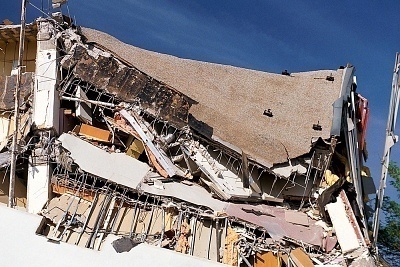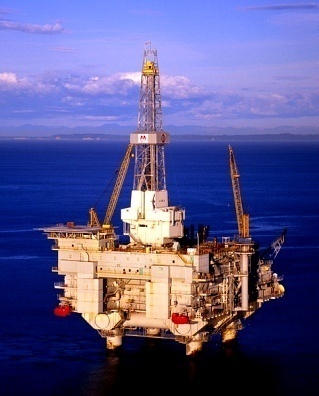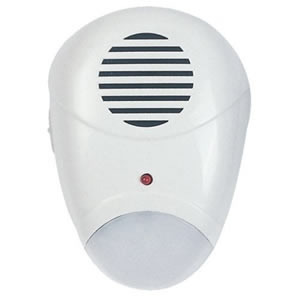Since the United States first landed a man on the moon, children and adults have been fascinated with how rockets work! Whether one is trying to fly a small model rocket or launching a star ship to rendezvous with the International Space Station, the principles of how rockets work remain the same. Although rocketry has seen significant advances since World War 2, only a limited number of countries have been able to develop the technology to routinely send spacecraft, satellites, and people into space.
How Does Rocket Propulsion Work?
Every rocket designed and employed in the modern-era has been based on Sir Isaac Newton’s Third Law of Motion. This law states that, “Every action has an equal and opposite reaction.” More specifically, if a body of matter is pushing matter behind it, it will move forward. For rockets, the matter being pushed is typically a gas, liquid, or even solid propellant that is burned and passed through the rocket engine. In rocket propulsion systems, the fuel is mixed with an oxidizer that provides a source of oxygen. This mixture is then ignited in the combustion chamber of the rocket that produces the rocket exhaust. The exhaust is expelled through engine exhaust nozzles in order to create thrust and accelerate the rocket body. Unlike other gas turbine engines which use atmospheric air, rocket engine design relies on exhaust gases to produce lift. This allows the engines to be used in space when there is an absence of air for use in the propulsion system.
Understanding Motion
Significant advancement in the field of rocketry originates in the 17th century with the early work of Sir Isaac Newton and Galileo in the understanding of motion. Galileo conducted a large number of experiments focused on exploring the laws of motion. He was able to conclude that moving objects did not require a continual application of force to keep moving (in absence of drag and friction). His work resulted in developing the principle of inertia. This principle stated that all matter, due to its mass, resists all changes in motion. The greater the mass in an object, the more the resistance would be.
Sir Isaac Newton
Sir Isaac Newton never got to meet Galileo since he was born on the year that Galileo passed away. He was able to advanced Galileo and other’s work in the field through the proposal of the three basic laws of motion. The development of these laws provides the foundation of all rocket science practiced today and is the key to understanding how rockets work.
What are Newton’s Laws of Motion?
Sir Isaac Newton published the Laws of Motion in his work, Philosophia Naturalis
Principia Mathematica. The laws he developed help to formally relate the concepts of force and direction to all of the forms of motion. Translated to English, Newton’s Laws of Motion are:
First Law of Motion
Objects at rest remain at rest and objects in motion remain in motion in a straight line unless acted upon by an unbalanced force.
As used in this law, the concepts of rest and motion can be confusing to those who have not studied physics before. They apply when discussion an object relative to its surroundings. For example, if a person is sitting in a chair, their body is at rest. If the chair is onboard a ship moving through the water, the person’s body is still considered to be at rest. This is due to the fact that the ship is moving along with the chair and one’s body.
Force is defined as a push or pulls exerted on an object. It can be connoted in a number of ways to include movement of air, electromagnetism, and muscle power. In the field of rocket science, force is normally exerted through the burning of propellant which expands in an explosive manner. The concept of unbalanced force refers to the sum total of force imbued on an object. Since gravity is always exerting a downward force, when an object is moved from being at rest this action of movement results in an unbalanced force being created.

The concept of unbalanced force also refers to the interaction of other motions upon a mass. For example, when a baseball is thrown, the force of throwing the ball results in an unbalanced force upon the mass of the ball. Eventually, the drag of the air will slow down the ball and the force of gravity will drag it downwards. Once the ball stops rolling, the forces are in balance again. If the same ball was thrown in outer space, the act of throwing the ball results in an unbalanced force upon the mass. When the person’s hand is no longer in touch with the ball, the force is balanced; however, the ball will travel in a straight line forever (or until it comes into contact with another mass in space such as an asteroid or planet).
Second Law of Motion
Force equals mass times acceleration (or F = MA).
In Newton’s Second Law of Motion, mass is defined as the total amount of matter contained by an object. Mass does not have to be solid, it can be in liquid or gaseous form. The key concept regarding mass, is that unless its state is altered, it will remain the same whether or not it is located on Earth, the Moon, or in space. It is the total quantity of matter contained within an object. The weight of an object is the product of mass multiplied by the acceleration of gravity when located on Earth or another planet that has gravity.
Acceleration is defined as the measurement of the change in motion on an object. It typically refers to an increase or decrease in speed or direction.
Third Law of Motion
For every action there is an equal and opposite reaction.
In Newton’s Third Law of Motion, action is the result of applying force to a mass. Reaction is defined as relating to an action.
Explaining Newton’s First Law
Newton’s First Law of Motion is often referred to as Galileo’s law of Inertia since he is credited with discovering the principle. The primary point of the law as it relates to rockets, is that a body at rest requires an unbalanced force to allow it to leave the ground. For example, a rocket or missile on a launching pad will require the unbalanced force of thrust produced by the rocket engine to be greater than the force of gravity to allow it to lift off. For the duration of the rocket thrust, the rocket body will continue to accelerate. Once the rocket engine ceases burning, the forces acting on the rocket become unbalanced again. If the rocket remains in Earth’s atmosphere, then the force of gravity will take over acting on the rocket body and it will fall back to Earth again until the body is at rest.
Once a rocket (or spaceship driven by a rocket) reaches outer space, the drag of the atmosphere on the rocket is significantly reduced or eliminated depending on the distance from Earth the body has traveled. For a rocket to escape Earth’s atmosphere, it will need to travel at speeds in excess of 25,000 miles per hour. The rocket will be slowed by the force of gravity; however, it will not be significant enough to make it fall back to the Earth’s surface. Once the rocket has escaped the Earth’s atmosphere, the inertia of the body will continue to propel the rocket towards space. Four of NASA’s exploratory spacecraft are continuing their journeys into space based on this principle at the time of this writing: Pioneers 10 and 11, and Voyagers 1 and 2.
Explaining Newton’s Second Law
Newton’s Second Law formally explains the relationship between force (F), mass (M), and acceleration (A),(F=MA). As it applies to rockets, the force produced by the rocket’s engine will be directly proportional to the mass of both the fuel and particles that are produced by the rocket propellant burn multiplied by the acceleration of the combustion products out of the engine. The law’s application in this phase of the flight of the rocket only applies to the material traveling out of the engine exhaust at the time of burn, and not the overall mass of the rocket. When trying to understand how rockets work, the implication of the law is that the greater the amount of propellant (mass) used at any given time combined with the associated increase in acceleration of the products from the engine’s exhaust provides a greater amount of thrust, or force.
Explaining Newton’s Third Law
Newton’s Third Law is the best known of the three laws of motion. In rocket science, the action produced by the expulsion of fire, gas, and smoke from the rocket engine relates to the reaction of the rocket being propelled in the opposite direction. Even though the action and reaction of the rocket motor during burn is equal, the mass of the fire, gas, and smoke being propelled by the rocket engine is much smaller or less than the overall mass of the rocket being sent in the opposite direction. As a result, even though the force being applied is equal, the effects of the force on the rocket body are different. F
Rocket Science Basics
Sending a rocket into space is significantly more complicated that what the Laws of Motion may imply. The process of designing a rocket which can reach orbital velocity or make it to interplanetary space is very complex. Newton’s law provide the foundation for how rockets work; however there are a number of additional factors that must be taken into account. For example, the role of air pressure on a rocket while still in the atmosphere is a significant issue when trying to send a spacecraft, rocket, or satellite into orbit. While the rocket body remains in the Earth’s atmosphere, there is significant internal pressure produced by the burning propellant inside of the rocket motor or engine’s combustion chamber. This pressure must be greater than that found outside of the chamber in order for the propellant to leave the engine nozzle.
As a result of having to overcome the external air pressure, the velocity of the rocket motor exhaust is reduced while passing through the opening of the engine nozzles. As the rocket climbs through the Earth’s atmosphere, the ambient pressure that the rocket exhaust must overcome is reduced with the increase in altitude.
The overall mass of the rocket is another important factor when attempting to launch a rocket into space. As the rocket thrust increases, the altitude of the body will also increase. As the combustion elements are ejected by the engine motor exhaust, the overall mass of the rocket body will decrease. As this phenomenon occurs, the inertia of the rocket will lessen helping to increase the upward acceleration of the rocket.
As a result, the second law of motion can be rewritten as:
F = Mexit*Vexit + (Pexit-Pambient)*Aexit
Once the rocket body reaches outer space and the exit pressure subtracted by the ambient pressure becomes or approaches zero, the equation further modifies to reflect:
F=Mexit*Vexit
Additional Rocket Science Factors
There are a number of other factors that come into play with modern-day rocket science. For example, even with a low acceleration rate, a rocket will continue to gain speed over time since acceleration accumulates. Also, not all rocket propellants behave in the same manner. Some will produce significantly more thrust than others due to their mass and overall burn rate. Scientists will not always choose propellants that create the most energy since all propellant choices result in different advantages and disadvantages that range from cost, weight, mass, and performance. Some propellants are in liquid form, but require more severe temperature controls or storage tanks than equivalent solid-type fuel.
How are Rockets Designed?
The classic rocket consists of a cylindrical shell of metal composition. There is a cone at the front of the rocket and fins toward the rear of the rocket body for stability. The rocket cone and fins aid in the smooth flight of the rocket through the air while the rocket body provides enough room for control circuitry, fuel, parachutes when appropriate, and permits smooth flight.
Rocket engines; however, require the use of an oxidizer in addition to a fuel source, fuel pumps, combustion chamber, and nozzles. Since rockets are expected to operate in space, their fuel source must include an oxidizer, or the rocket motor will fail to operate as it approaches the edges of the Earth’s atmosphere.
What is the Difference between Liquid and Solid Fuel Rocket Engines
Two of the most common propellant types used in modern rockets are liquid and solid fuel. Liquid fueled rockets have the oxidizer and fuel stored in separate locations in the rocket. The two mixtures are sent to the combustion chamber of the rocket where combustion occurs. In solid-fueled rockets, the propellant is stored in a single location in sold form. In the solid fuel design, the propellant does not ignite until heat is applied to the propellant. Rockets relying on solid fuel are typically less-complex since they do not require as many pumps, controls, or tanks as those which rely on liquid fuel contain. A rocket that relies on liquid fuel is typically loaded just prior to use and feature the advantage of being able to turn off ignition on demand. A solid-fueled rocket; however is more difficult to turn off propulsion, but does feature the advantage of being able to sit for prolonged periods of time with the fuel loaded into the rocket.
What is the Future of Rocket Propulsion Systems?
One of the current focus areas for rocket science research is in electromagnetic propulsion. The ultimate goal of this research is to produce a spacecraft or rocket fully reliant on electrical power. In the current research, the rocket engine accelerates ions through the use of electrostatic force. Other methods such as electromagnetism are used to help directly accelerate the mass. The electric power is then used to ionize the atoms in the system and create a voltage gradient capable of accelerating them to extremely high exhaust velocities. To date, these propulsion systems have not been able to produce sufficient force on their own to consistently work; however, they have been able to generate sufficient thrust when combined with nuclear electric systems to work.
Competing technologies in research circles include electrothermal thrusters, pulsed inductive, and pulsed plasma thrusters. Some of the areas of future research include a differential sail, bias and disjunctive drives, and a hyperspace drive based upon Heim’s theory.




Follow Us!